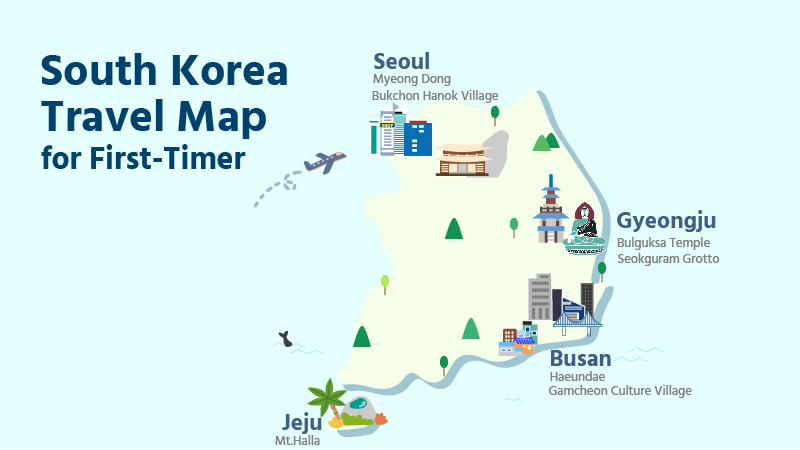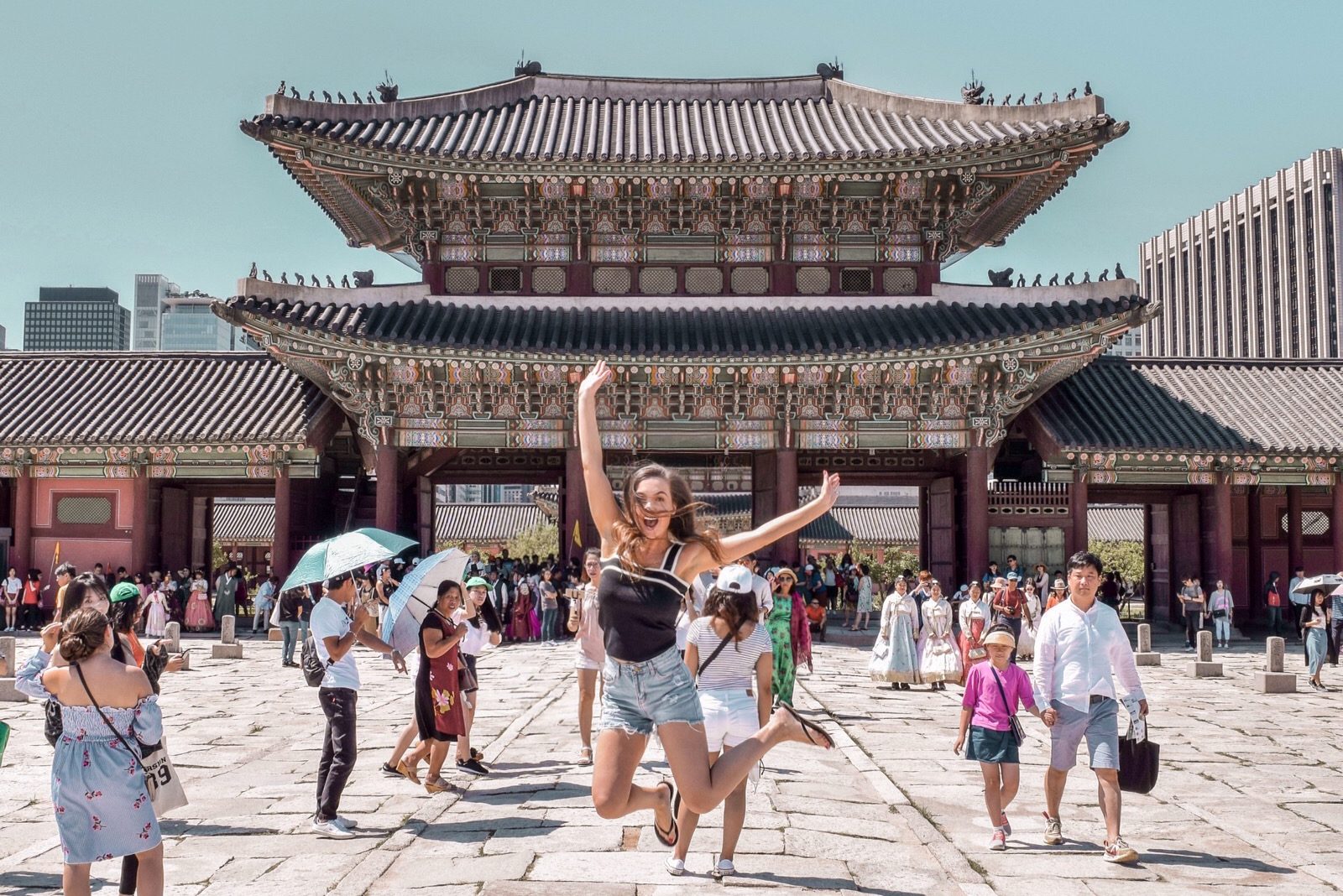Thinking about your first trip to South Korea? You’re in for an amazing experience.
South Korea offers vibrant cities, rich culture, and delicious food. Traveling to South Korea for the first time can be exciting yet overwhelming. The country is a unique blend of ancient traditions and modern innovations. From bustling Seoul streets to serene Buddhist temples, there’s so much to explore.
Maybe you’re drawn to the K-pop scene or the historical landmarks. Or perhaps you’re curious about Korean cuisine. Whatever your interests, this journey promises unforgettable memories. South Korea is a place where every visitor finds something special. Ready to discover what makes South Korea so captivating? Let’s dive into the essentials for your first visit.

Planning Your Trip
Planning your first trip to South Korea can be both exciting and daunting. This section will help you get started with your travel plans. From deciding the best time to visit, to understanding visa and entry requirements, we’ve got you covered. Let’s dive in.
Best Time To Visit
South Korea boasts four distinct seasons, each offering a unique experience. Here’s a quick overview:
- Spring (March to May): Cherry blossoms and mild weather. Ideal for sightseeing.
- Summer (June to August): Hot and humid, but great for beaches and festivals.
- Autumn (September to November): Beautiful fall foliage and pleasant temperatures.
- Winter (December to February): Cold and snowy. Perfect for skiing and winter sports.
Most travelers prefer visiting during spring and autumn. These seasons offer comfortable weather and stunning natural scenery. If you love festivals, summer is packed with exciting events.
Visa And Entry Requirements
Before booking your flight, check the visa requirements for your nationality. Here’s a quick guide:
| Nationality | Visa Requirement |
|---|---|
| USA | No visa for stays up to 90 days |
| UK | No visa for stays up to 90 days |
| Australia | No visa for stays up to 90 days |
| India | Visa required |
Ensure your passport is valid for at least six months from your date of entry. You may also need to fill out an arrival card upon landing. This includes basic personal information and the purpose of your visit.
For longer stays or specific purposes like work or study, apply for the appropriate visa before traveling. Visit the official South Korean embassy website for detailed information.
Must-visit Destinations
South Korea offers a unique blend of modernity and tradition. For first-time visitors, the country has many must-visit destinations. These places showcase its rich history, vibrant culture, and stunning landscapes. Let’s explore some of these captivating spots.
Seoul Highlights
Seoul, the capital city, is a bustling metropolis with much to offer. Here are some highlights:
- Gyeongbokgung Palace: A majestic palace with beautiful architecture and gardens.
- Myeongdong: A shopping paradise with street food and trendy shops.
- N Seoul Tower: Offers a panoramic view of the city from its observation deck.
| Attraction | Description |
|---|---|
| Gyeongbokgung Palace | A grand palace with historical significance and picturesque gardens. |
| Myeongdong | A vibrant shopping district with diverse street food. |
| N Seoul Tower | Provides stunning city views, especially at night. |
Exploring Busan
Busan is South Korea’s second-largest city. It is known for its beaches, mountains, and seafood. Key places to explore include:
- Haeundae Beach: Famous for its scenic coastline and lively atmosphere.
- Jagalchi Fish Market: The largest seafood market in Korea, offering fresh catches daily.
- Gamcheon Culture Village: A colorful hillside village with art installations and murals.
Each destination in Busan has its own unique charm and is worth a visit.
Cultural Etiquette
South Korea is a beautiful country with a rich culture. Understanding cultural etiquette is important for a smooth visit. Respecting local customs will help you make a positive impression. This section will guide you through the essential do’s and don’ts, and provide useful language tips.
Do’s And Don’ts
In South Korea, showing respect is key. Here are some do’s and don’ts:
Do’s:
- Bow when greeting or thanking someone.
- Use both hands to give or receive items.
- Remove shoes before entering homes.
- Use polite language, especially with elders.
Don’ts:
- Point with your finger; use your hand instead.
- Speak loudly in public places.
- Write someone’s name in red ink.
- Leave your chopsticks sticking up in your rice.
Language Tips
Learning a few Korean phrases can enhance your experience. Here are some basics:
Using these phrases shows respect and makes interactions smoother. Try to practice them before your trip.
Transportation Guide
Visiting South Korea for the first time can be thrilling and a bit overwhelming. One of the most important aspects to consider is transportation. Understanding how to get around can make your trip smoother and more enjoyable. This transportation guide will help you navigate public transport, use taxis, and ride-sharing services with ease.
Navigating Public Transport
South Korea has an excellent public transport system. The subway is clean, efficient, and easy to use. Signs and announcements are often in both Korean and English. Buy a T-money card for convenience. This card works on subways, buses, and even some taxis. You can recharge it at convenience stores or subway stations.
Buses are another great option. They cover areas that the subway does not. Buses are color-coded. Blue buses travel long distances, green buses cover shorter routes, yellow buses circle neighborhoods, and red buses are express services. Make sure to check the routes and schedules online or through apps.
Using Taxis And Ride-sharing
Taxis are widely available in South Korea. They are relatively affordable and safe. Most drivers do not speak English, so have your destination written in Korean. You can also use translation apps to communicate. There are different types of taxis. Regular taxis are silver or white, while deluxe taxis are black with gold stripes. Deluxe taxis offer a higher standard of service.
Ride-sharing services like Kakao Taxi are popular. Download the app and set up your account before you travel. The app is user-friendly and offers an English version. You can choose your pick-up and drop-off points with ease. This can be a convenient option if you prefer not to speak directly with the driver.
Accommodation Options
Planning your first trip to South Korea? Choosing the right accommodation can make your stay memorable. South Korea offers a wide range of options to suit every traveler’s needs and budget. From luxurious hotels to cozy guesthouses and traditional Hanok stays, there is something for everyone.
Hotels And Guesthouses
Hotels in South Korea range from high-end luxury to budget-friendly options. Popular hotel chains are available in major cities like Seoul, Busan, and Incheon. These hotels offer modern amenities, comfortable rooms, and excellent service. Many provide easy access to tourist attractions and public transport.
For a more intimate and budget-friendly option, consider staying in a guesthouse. Guesthouses are typically smaller and provide a homier atmosphere. They often include free breakfast and a chance to meet other travelers. Guesthouses are popular in areas like Hongdae and Itaewon in Seoul.
Traditional Hanok Stays
Experience South Korea’s rich cultural heritage by staying in a traditional Hanok. These historic houses feature unique architectural designs and have been preserved for centuries. Hanok stays offer a glimpse into the country’s past and provide a serene environment.
Many Hanoks are located in picturesque villages or bustling city areas like Bukchon Hanok Village in Seoul. Staying in a Hanok usually includes sleeping on a futon on heated floors, known as Ondol, and enjoying traditional Korean meals.
| Accommodation Type | Key Features |
|---|---|
| Hotels | Luxurious rooms, modern amenities, central locations |
| Guesthouses | Affordable, homely atmosphere, free breakfast |
| Hanok Stays | Traditional experience, unique architecture, cultural immersion |

Local Cuisine
Exploring local cuisine is a must for anyone visiting South Korea. The food culture here is rich and diverse. Each region boasts its unique flavors and ingredients. From street food to fine dining, you will find something to delight your taste buds. This guide will help you navigate the must-try dishes and dining etiquette in South Korea.
Must-try Dishes
Start with Bulgogi, a popular Korean BBQ dish. Thin slices of marinated beef grilled to perfection. Kimchi is another staple. It’s a spicy, fermented vegetable dish, often made from cabbage. You cannot miss Bibimbap. This mixed rice dish includes vegetables, meat, and a fried egg. All topped with chili pepper paste.
For something unique, try Samgyeopsal. Grilled pork belly served with dipping sauces. Another favorite is Jjajangmyeon. Noodles in a savory black bean sauce. Don’t forget Tteokbokki. Spicy rice cakes that are chewy and addictive.
Dining Etiquette
Respect dining etiquette to enjoy your meals fully. Always wait for elders to start eating first. Use both hands to pour drinks for others. This shows respect. Don’t stick chopsticks upright in your bowl. It’s considered bad luck. Instead, place them on the chopstick rest.
Slurping noodles is okay and shows you enjoy the food. Don’t waste food. Only take what you can eat. Sharing dishes is common, so be ready to try everything. When finished, place utensils neatly to signal you are done. These simple steps will enhance your dining experience.
Shopping In South Korea
Shopping in South Korea is an exciting experience for any visitor. The country offers a mix of traditional markets and modern shopping malls. You will find a variety of products, from high-end fashion to unique souvenirs. Whether you are a shopaholic or a casual shopper, South Korea has something for everyone.
Popular Markets
South Korea’s markets are vibrant and full of life. These markets are perfect for finding unique items and experiencing local culture. Namdaemun Market in Seoul is one of the largest and oldest markets. You can find clothes, accessories, and street food here. Dongdaemun Market is another popular spot, known for its wholesale clothing shops and night market. For a more traditional experience, visit Gwangjang Market. It is famous for its food stalls offering traditional Korean dishes.
Shopping Malls
South Korea boasts some of the best shopping malls in Asia. These malls offer a wide range of international and local brands. COEX Mall in Seoul is one of the largest underground shopping malls. It features a huge aquarium, a library, and countless shops. Another must-visit is Lotte World Mall. It is home to luxury brands, an aquarium, and even an ice rink. Times Square Mall is also popular, offering a mix of entertainment and shopping options.

Safety Tips
Planning your first trip to South Korea can be exciting and a bit overwhelming. Safety is one of the top priorities for any traveler. This section will provide practical safety tips. These will ensure your trip is enjoyable and worry-free. Read on to discover how to stay safe and what to do in an emergency.
Staying Safe
South Korea is generally very safe. Crime rates are low compared to many other countries. Still, it’s important to stay alert. Keep an eye on your belongings. Petty theft can happen in crowded areas. Always keep your passport in a secure place. Use a money belt or a neck pouch.
At night, stick to well-lit streets. Avoid dark alleys or isolated areas. Public transportation is safe, but be cautious late at night. If you feel uncomfortable, take a taxi. South Korean taxis are reliable and reasonably priced.
Emergency Contacts
Knowing emergency numbers is crucial. In South Korea, dial 112 for police assistance. For medical emergencies, call 119. These numbers work from any phone, including mobiles.
Many South Koreans speak some English, but not all. Learn a few basic Korean phrases. This can be helpful in emergencies. For example, “도와주세요” (dowajuseyo) means “Please help me.”
Embassies and consulates are valuable resources. Keep your embassy’s contact information handy. They can assist you in serious situations.
Frequently Asked Questions
What Are The Must-visit Places In South Korea?
South Korea boasts amazing destinations. Visit Seoul’s Gyeongbokgung Palace, Busan’s Haeundae Beach, and Jeju Island’s natural wonders. Don’t miss the vibrant streets of Myeongdong for shopping and street food.
What Is The Best Time To Visit South Korea?
The best time is spring (April-June) and autumn (September-November). These seasons offer pleasant weather and beautiful landscapes. Spring showcases cherry blossoms, while autumn features colorful foliage.
Do I Need A Visa To Visit South Korea?
It depends on your nationality. Many countries have visa-free entry for short stays. Check the South Korean embassy’s website for specific visa requirements based on your nationality.
What Language Is Spoken In South Korea?
Korean is the official language. In major cities, some people speak English, especially in tourist areas. It’s helpful to learn basic Korean phrases for a smoother experience.
Conclusion
Exploring South Korea for the first time can be an unforgettable journey. From bustling cities to serene temples, there’s something for everyone. Try local food, embrace the culture, and make new friends. Each moment adds to your adventure. Pack your bags, and get ready for an amazing experience in South Korea.
Safe travels!



